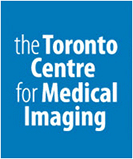
Canadian Bone Mineral Densitometry Accreditation from the OAR (Ontario Association of Radiologists)
Bone Mineral Density Scans
Bone Density Test / Screening in our Toronto Clinic
At the Toronto Centre for Medical Imaging, bone density testing is available by appointment during regular business hours from Monday to Friday with short (less than 1 week) wait times. As with all our studies, we accept requisitions from for any physician licensed in Ontario and you can count on being taken in on time for your appointment.
Call our front desk at 416-368-8488 to book your bone density test.
Read the BMD Testing Interval ISCD Response to NEJM Article that was recently released.
This test is one of the pillars in the diagnosis and management of osteoporosis. Osteoporosis affects more than 2 million Canadians. While 1 in 8 women have a lifetime risk of developing breast cancer, 1 in 4 women have a lifetime risk of developing osteoporosis (1 in 8 for men).
Just as hypertension (high blood pressure) is generally asymptomatic and is the leading cause of congestive heart failure, osteoporosis is also silent and only becomes apparent when a bone is fractured from what would generally be considered a minor fall (fragility fracture). Hence the term applied to osteoporosis is that of a “silent thief”. The bones that are commonly involved include the wrist, hip and spine.
Risk factors for osteoporosis include age over 65 for women and men, vertebral compression fracture, fragility fracture after age 40, family history, >3 months use of glucocorticoid drugs and medical conditions that inhibit absorption of nutrients.
A diagnosis of osteoporosis and associated fracture risk has significant implications for future fragility fractures. This is important because almost 30% of patients who sustain a hip fragility fractures will die of complications from the fracture. Another 40% will spend the rest of their lives in a long-term care or rehab facility. Only 30% will be able to go back home.
A diagnosis of osteoporosis can be established with Bone Density Testing (available at the Toronto Centre for Medical Imaging). This clinic has been the first site to be accredited by the Ontario Association of Radiologists (OAR) Bone Density Accreditation Program since 2009. The technologist is certified by the International Society for Clinical Densitometry (ISCD) and by the OAR.
The reporting radiologist, Dr Ismail, is a Certified Clinical Densitometrist (CCD) with more than twenty year’s experience in the interpretation of Bone Density studies. Dr Ismail has successfully demonstrated proficiency in meeting the OAR (Ontario Association of Radiologist’s) Canadian Bone Mineral Densitometry (CBMD) Facility Accreditation Program Standards for Reporting BMD.


